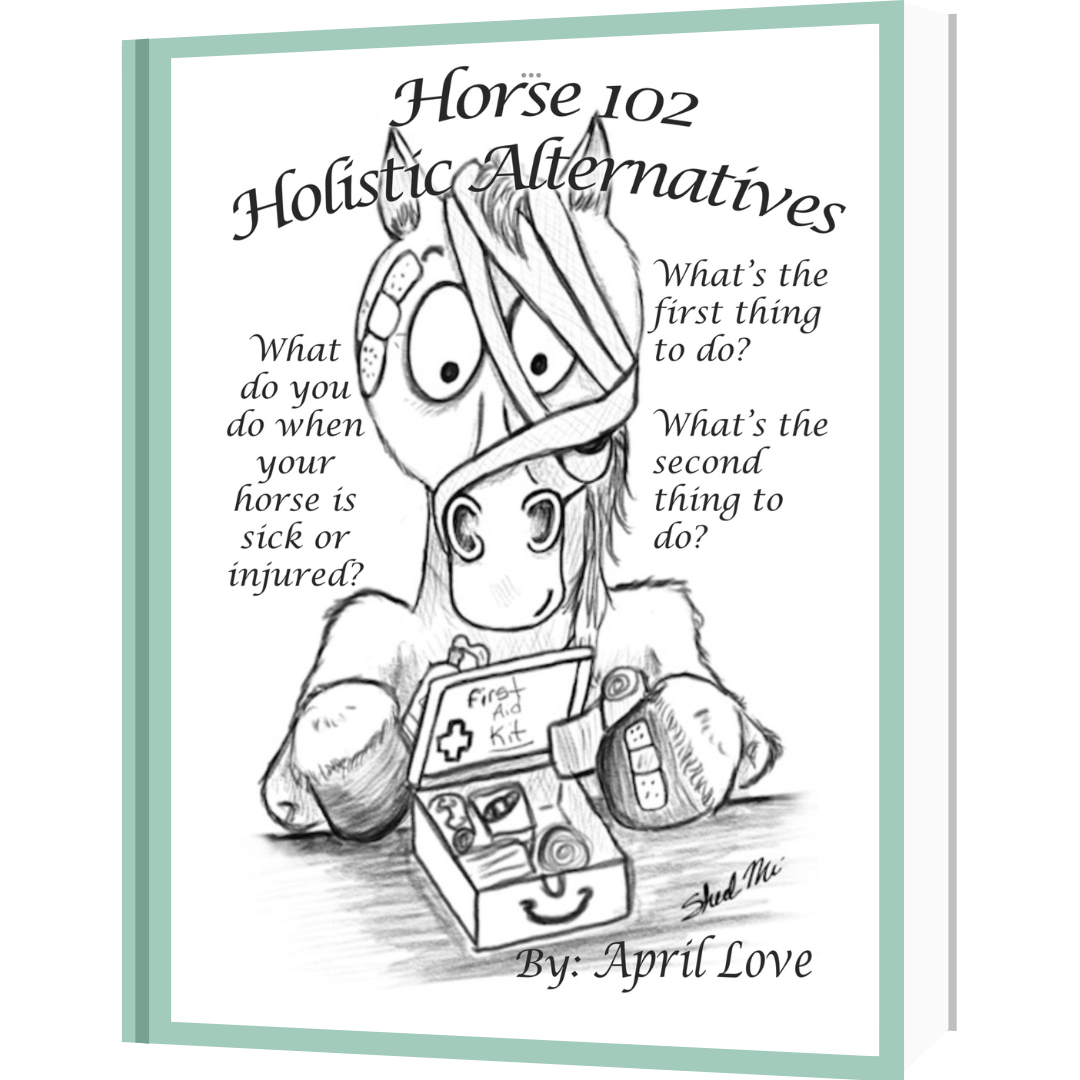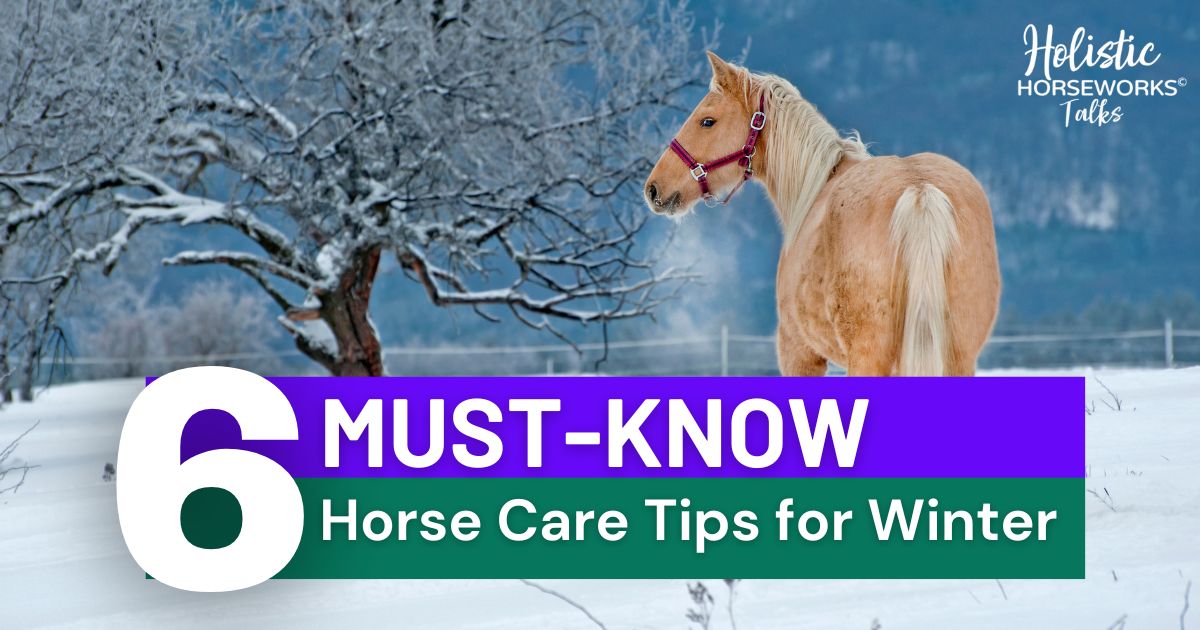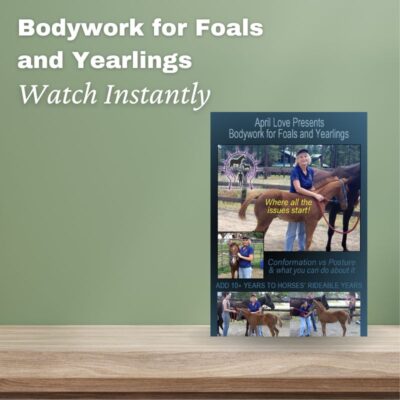Are you ready to treat a wound in an emergency?

In this episode of Holistic Horseworks, April retells a story about an incident in one of her clinics. Despite being told three times to NOT tie the horse to the corral panels, one student did just that. When the horse spooked, the corral panel hit another student in the head and caused a small but bloody gash.
While her students were wondering what to do, April stepped in to treat the wounded student. April was prepared to stop the bleeding and there were two lessons learned that day – how not to tie a horse and how to treat a fresh wound.
Episode Transcription
Expand to read more...
00:00:31
Hi, this is April with Holistic Horseworks and this is all the amazing information that I
00:00:36
want to share with you today.
00:00:38
Amy: So, April, do you have any stories from your students where they experienced your program firsthand?
00:00:45
You know, we had.
00:00:46
A student in a class, and no matter how many times I told them, do not hard tie the
00:00:52
horse to the
00:00:53
corral panels that are loose and only tie to the post of baling twine. This one person kept doing.
00:01:00
And all of a sudden something walked by in front of the horse and spooked the horse, and she shot backwards. The bailing twine snap. So now she’s hard tied to a 10-foot corral panel. It’s flying through the air, through the horses, and she’s dragging it.
00:01:17
And it hit one of the students.
00:01:18
In the head.
00:01:20
And you know how head wounds are?
00:01:23
They bleed a lot.
00:01:26
And so they took care of the horse, and I took care of the student and I sprayed the Release on it. (And all of this is in my.
00:01:33
Book) to immediately take down the trauma of the wound before you’re going to get the big swelling.
00:01:41
And then I
00:01:42
Did the Dynamite Liquid Trace Minerals straight in which cauterizes the wound and stops bleeding.
00:01:47
So, then it immediately turns black and like a scab, but he’s got blood everywhere in his hair. So, then I’m having to wash to see where the wound really is.
00:01:57
Because it really.
00:01:58
Coagulates all the blood, so you might have blood everywhere and the cut might only be like an inch long and an inch wide, so.
00:02:07
After I stopped the bleeding, then we hot-packed it with the tea tree oil and trace minerals like I do for the horses’ wound and just slowly wash through his hair. I mean, we’re lying in between.
00:02:19
pallets and hay, we’re still out at the barn and his head is in my lap and I’m just. I’m like, do you trust me? He’s like, yes, I said OK and we cleaned it all up and it was really small. And I did more Release and more of the hot packing. And so that we’d stop the bleeding.
00:02:39
Taking the immediate trauma down and cleaning it up, and then when he.
00:02:45
went to the local doctor.
00:02:47
We’re talking farm, you know, clinic down the road.
00:02:51
And he was like.
00:02:53
I’m just going to staple you, and no local sedation. He just put 3 staples in his head. I don’t know if he was upset that we had taken care of it and didn’t send him in with this guy dripping blood down his arm or something and you could hardly even see it. There was hardly any swelling. That’s what the Dynamite Release does.
00:03:14
So his wife.
00:03:15
Had come and took him. Just, you know, in case of concussion and all this and that. And he was back in class the next day, he said, “I’m gonna sit out. I’m not quite feeling 100%” but we’re all looking at his wound and because we got the Dynamite Release spray on it immediately didn’t have the green-yellow.
00:03:33
bruises and the trauma and the swelling and
00:03:37
The trace minerals, turning it like black, like a day-old scab and everybody’s like, wow, that looks like it’s about 10 days old instead of just happened yesterday. And then we were taking pictures of it going ohh that’s cool staples. You of course out in the bar. And you’re not going to go to that member site, but that’s in my
00:03:55
Horse 102 book.
00:03:57
What you wanna get on the wound right away.
00:04:00
So, it’s really nice to have those kind of tools and you
00:04:04
know for people.
00:04:04
To have a place to go to because.
00:04:07
Everybody was like.
00:04:09
Oh, my God, what do we do?
00:04:12
It’s like, come here.
00:04:14
Have a little protocol to do.
00:04:15
On you. If you trust me and he’s like yes,
00:04:17
I trust you?
00:04:19
It was a really good lesson on what to do for how not to hard tie.
00:04:23
Horses to something.
00:04:26
And what to immediately get on the wound? Kind of in what steps?
00:04:32
Thank you for tuning in to another episode of Holistic Horse Works talks with April Love. Remember to check the show notes for links to all the resources mentioned in this episode. Have a question you’d like to submit to the podcast e-mail April at holisticHorseworks.com.
00:04:51
For a chance to get it featured on the next episode, love this information. Share it with your horse friends, they’ll find it helpful too.
00:04:59
To learn more, visit holistichorseworks.com and before you go, make sure you have a copy of our free
00:05:06
E-book: Horse 101, Everything You Wish You Had Known Before You Got Your First Horse at horseacademy101.com.
Ever wondered about the real impact of our Holistic Horseworks program? Well, I’ve got a story for you.
I had a student who, despite all advice, kept hard-tying a horse to a shaky corral panel instead of the safer post with baling twine. One fateful day, something spooked the horse, and chaos ensued. The baling twine snapped, and the horse was now attached to a flying 10-foot corral panel! Tragically, the panel hit one of our students in the head. You can imagine how head wounds tend to bleed profusely.
But fear not! I was prepared with our secret weapon Dynamite Release spray, as described in my Horse 102 ebook. It immediately reduced the trauma and swelling. Then I used Dynamite Liquid Trace Minerals, which cauterized the wound and stopped the bleeding. Magic, right? After halting the bleeding, we applied hot packs with Tea Tree Oil and more Trace Minerals to cleanse and soothe.
By the time the medic arrived, he was doctor was astounded by the lack of swelling and the positive progress the wound had already made. Thanks to our quick action, Dynamite Release spray, Trace Minerals, and Tea Tree Oil he was back in class the very next day! No green or yellow bruises, no swelling, just a healing wound. We even took pictures of it – it looked like it had been healing for 10 days instead of one.
Want to know more about what to have in your first aid kit at home, in the barn, on the trail, and at shows? Check out my ebook Horse 102: Holistic Alternatives. Remember, it’s all about swift action and the right tools.
This story teaches us the importance of immediate action and having the right protocols in place for emergencies. It’s a lesson in trust, too. The injured student trusted us, and we delivered. So, remember, when it comes to horse care, Holistic Horseworks has got your back!
Horse 102: Holistic Alternatives
What do you do when your horse gets sick or injured? What’s the first thing to do? What’s the second thing to do? While you’re waiting for your veterinarian to arrive, this book offers some simple and effective things I have done to speed up recovery time and save money on costly vet bills. Suggestions in this book are much better ways to treat yourself and your horses at home with simple ingredients that speed up healing and save big money.
6 Must-Know Hore Care Tips for Winter
In this comprehensive guide, we'll share five essential cold weather horse care tips straight from the experts at Holistic Horseworks.Whether you're dealing with freezing temperatures, icy conditions or relentless mud, these strategies will help you keep your horse happy and healthy through even the harshest of winters.
Equine Vaccines: What’s In Them and How to Help Your Horse Naturally
Vaccines are often considered a cornerstone of equine health, but have you ever wondered exactly what’s in them, or how they might be affecting your horse’s long-term health?
Horses Are Talking, Are You Listening?
Holistic equine expert April Love wants you to know: your horse is speaking. And once you learn how to listen, everything changes. In her recent appearance at the Holistic Horse Conference, April sat down with Dr. Jeff Grognet and animal communicator Joan Ranquet to share her revolutionary approach to equine wellness.
How a Distance Reading CHANGED Kimberly and Her Horse
In this interview, holistic healing expert April Love uncovers the deep, often invisible threads connecting horse and human wellness. Join Kimberly, host of The Backyard Horse Enthusiast, as she shares her transformative experience with April's intuitive healing techniques.
Is It Really a Training Problem, or Is Your Horse in Pain?
If your horse bucks, resists the canter, or just feels off under saddle, the first thing many people assume is that it’s a training issue. Maybe the horse is being stubborn, or maybe it just needs more groundwork. But I want to let you in on something I’ve seen over and over again—those “training problems” are almost always your horse trying to say, “Ouch, that hurts!”
Did You Know That Saddle Fit Issues Are Really Horse Body Issues?
Saddle fit isn’t just about the saddle — it’s about the ever-changing body of the horse beneath it. While it’s tempting to invest in custom saddles or quick fixes like padded inserts, lasting comfort and performance come from addressing the root of the issue: your horse’s physical balance and symmetry.
Useful, Helpful Tips and Tricks for Horse Care | April Love’s Interview on The Backyard Horse Enthusiast
What would you do if your horse was limping, colicking, or spooking—and no one could tell you why? That question lit a fire in April Love that would grow into a global mission: helping horse owners uncover the root causes of mystery lameness, behavioral issues, and chronic pain that traditional methods often miss.
How to Find the Cause of Lameness in Horses
When a horse shows signs of lameness, pinpointing the exact cause can be challenging due to compensatory mechanisms. Horses often redistribute weight and movement to avoid pain, making the actual injury difficult to locate. Here’s a practical step-by-step guide to help you identify the root cause of lameness in horses.
Dogs Love Bodywork, Too! (Prevents ACL Tears and Hip Displaysia.)
If you’ve ever watched your dog run and noticed something a bit off—like both hind legs moving together or noticeably dragging their toes—it might be more than just an aging issue or a minor injury. Proactively managing canine skeletal health can prevent long-term joint issues such as hip dysplasia and ACL tears.

















![Complete Level 1 & Level 2 Home Study + Private Training Package [NO DVD]](https://holistichorseworks.com/wp-content/uploads/2022/08/Level-1-and-Level-2-complete-home-study-and-training-package-400x400.jpg)
![Level 1 "Equine Musculoskeletal Unwinding" Home Study -Watch Instantly [NO DVD]](https://holistichorseworks.com/wp-content/uploads/2022/08/Level-1-Home-Study-400x400.jpg)
![Level 2 “CranioSacral Unwinding & Advanced Applied Kinesiology” Home Study - Watch Instantly [NO DVD]](https://holistichorseworks.com/wp-content/uploads/2022/08/Level-2-Home-Study-400x400.jpg)




![Equine CranioSacral Energy Work -Watch Instantly [English and French]](https://holistichorseworks.com/wp-content/uploads/2022/09/equine-cranial-sacral-energy-work-watch-instantly-400x400.jpg)
